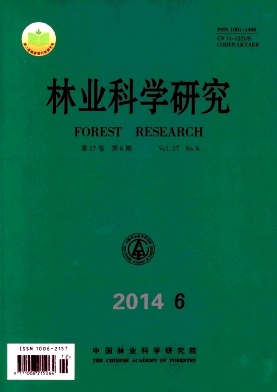|
[1]
|
Kirsi M, Heljä-Sisko H. Assessing fine-root biomass and production in a Scots pine stand-comparison of soil core and root ingrowth core methods [J]. Plant and Soil, 1999, 210:43-50. |
|
[2]
|
Dietrich H, Christoph L. A comparison of four different fine root production estimates with ecosystem carbon balance data in a Fagus-Quercus mixed forest [J]. Plant and Soil, 2002, 239:237-251. |
|
[3]
|
Heljä S H, John D, Pekka N, et al. Fine root biomass in relation to site and stand characteristics in Norway spruce and Scots pine stands [J]. Tree Physiology, 2007, 27:1493-1504. |
|
[4]
|
Ruess R W, Hendrick R L, Burton AJ,et al. Coupling fine root dynamics with ecosystem carbon cycling in black spruce forests of interior Alaska [J]. Ecological Monographs, 2003,73: 643-662. |
|
[5]
|
Finér L,Ohashi M,Noguchi K,et al. Factors causing variation in fine root biomass in forest ecosystems [J]. Forest Ecology and Management,2011, 261: 265- 277. |
|
[6]
|
丁金枝, 来利明, 赵学春, 等.荒漠化对毛乌素沙地土壤呼吸及生态系统碳固持的影响[J]. 生态学报, 2011, 31( 6): 1594 -1603.
|
|
[7]
|
杨小林,张希明,单立山,等.塔克拉玛干沙漠腹地塔克拉玛干柽柳根系构筑型研究[J].干旱区研究, 2008, 25 (5): 660-657.
|
|
[8]
|
单立山, 张希明, 柴仲平, 等.多枝柽柳幼苗根系分布对灌溉量的响应[J].干旱区研究, 2007, 24( 2 ): 213 - 218.
|
|
[9]
|
Olson J S. Energy storage and the balance of producers and decomposition in ecological systems [J]. Ecology, 1963, 44: 332-341. |
|
[10]
|
Vogt K A, Grier C C, Vogt D J. Production, turnover and nutrient dynamics of above- and below-ground detritus of world forests [J]. Advances in Ecological Research, 1986, 15: 303-377. |
|
[11]
|
张小全. 环境因子对树木细根生物量、生产与周转的影响[J]. 林业科学研究, 2001, 14( 5): 566-573.
|
|
[12]
|
Jackson R B, Mooney H A, Schulze E D.A global budget for fine root biomass, surface area, and nutrient contents [J]. Proceedings of the National Academy of Sciences of the United States of America, 1997, 94: 7362-7366. |
|
[13]
|
Jha P, Mohapatra K P. Leaf litterfall, fine root production and turnover in four major tree species of the semiarid region of India [J]. Plant and Soil, 2010, 326: 481- 491. |
|
[14]
|
Marianne K, Burke, Dudley J R. Fine root growth phenology, production and turnover in a northern hardwood forest ecosystem [J]. Plant and Soil, 1994, 162:135-146. |
|
[15]
|
Sutton R E.Soil properties and root development in forest trees: a review [J]. Information report O-X-413, Ministry of natural resources, Ontario, Canada, 1991. |
|
[16]
|
John B, Pandey H N, Tripathi R S. Vertical distribution and seasonal changes of fine and coarse root mass in Pinus kesiya Royle ExGordon forest of three different ages [J]. Acta Oecologica, 2001, 22:293-300. |
|
[17]
|
Fahey T J, Hughes J W. Fine root dynamics in a northern hardwood forest ecosystem, hubbard brook experimental forest [J]. Journal of Ecology, 1994, 82:533-548. |
|
[18]
|
Santantonio D, Hermann R K, Overton W S. Root biomass studies in forest ecosystems [J]. Pedobiologia, 1977, 17:1-31. |
|
[19]
|
Berg B. Plant litter: decomposition, human formation, carbon sequestration [M]. Berlin: Springer,2003. |
|
[20]
|
Wieder R K, Wright S J. Tropical forest litter dynamics and season irrigation on Barro Colorado Island, Panama [J]. Ecology, 1995, 76: 1971-1979. |
|
[21]
|
Eissenstat D M, Wells C E, Yanai R D, et al. Building roots in a changing environment: implications for root longevity [J]. New Phytologist, 2000,147:33-42. |
|
[22]
|
Gill R A, Jackson R B. Global patterns of root turnover for terrestrial ecosystems [J]. New Phytologist, 2000, 147:13-31. |
|
[23]
|
裴智琴,周 勇,郑元润,等.干旱区琵琶柴群落细根周转对土壤有机碳循环的贡献[J].植物生态报,2011, 35 (11): 1182-1191.
|
|
[24]
|
Eissenstat D M, van Rees K C J. The growth and function of pine roots [J]. Ecological Bulletins, 1994, 43:76-91. |
|
[25]
|
Fogel R. Root turnover and productivity of coniferous forests [J]. Plant and Soil, 1983,71:75-85. |





 DownLoad:
DownLoad: